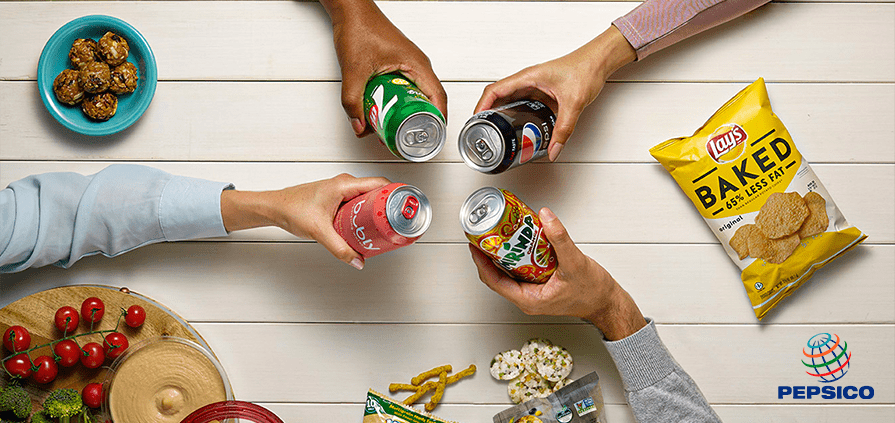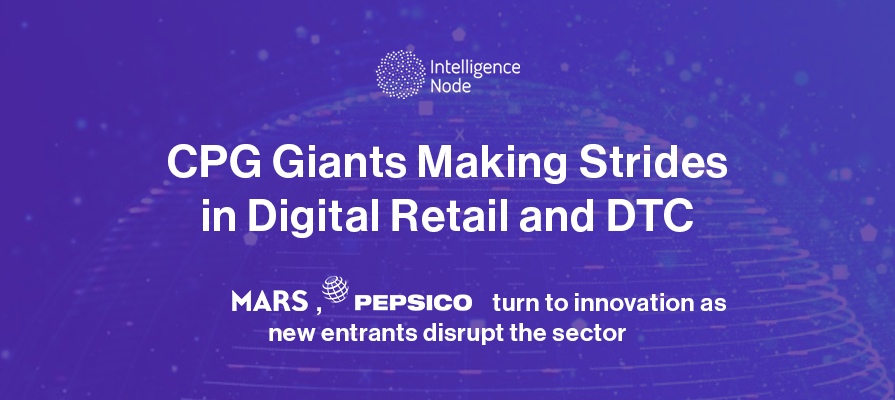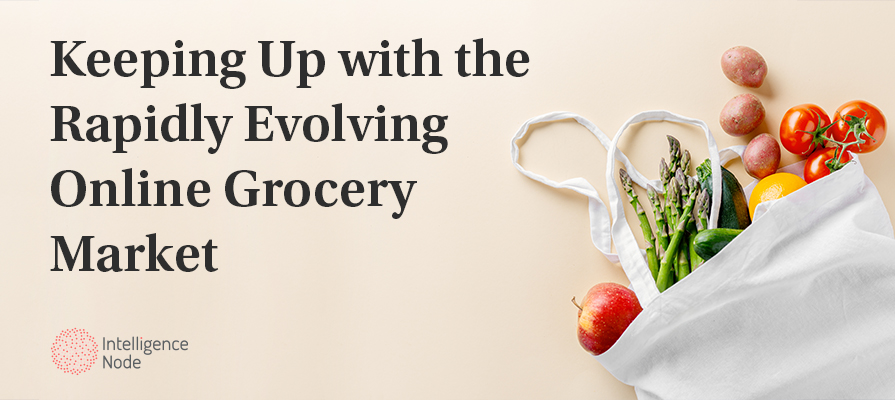CPG vs FMCG in DTC
The terms CPG and FMCG are often used interchangeably: FMCG as a category includes ‘fast-moving’ consumer goods- where inventory turnaround is so rapid that shelves are restocked every day. This is due to the products’ perishable nature and high demand, as seen in beverages (milk, juice), health products, snacks, and more. While there does undeniably exist an overlap in the two categories, and products of either category may still land in the same shopping cart, CPG brands claim ownership of products with a slightly more generous shelf life, and a relatively lower rate of replenishment, while still remaining highly affordable and in frequent demand.
These products are the face of a highly competitive, disruptive, and innovative sector, whose leading brands are making headlines in eCommerce and DTC, by leveraging technology and data-driven solutions for all things retail.
Consumer Packaged Goods Pack a Punch
Unsurprisingly, the CPG industry has been and remains one of the largest sectors in North America, valued at approximately $2 trillion, representing 10% of the US GDP. CPG behemoths operate over and above popularity: leading brands enjoy healthy margins and steady sales, with industry stalwarts comfortably claiming their space as household staples. These brands utilize dynamic and high-budget marketing efforts and pricing strategies to remain recognizable to target audiences, who typically gravitate towards these brands and products and make purchasing decisions basis the ever-familiar packaging alone. Many of these brands- Procter and Gamble, Coca-Cola, Mars Incorporated, etc. are generational pillars and have been almost habitually purchased by households over generations.
The eCommerce Lag in DTC
In an affordable, easily replaceable, vast arena of product options, not even the best of the best can rely on brand value alone- especially in 2022. This highly competitive industry sees a constant battle between new and old brands for shelf space and a neverending strategic quest for effective and memorable branding. Chief among these has been in the realm of eCommerce: DTC buy-ability, a more recent feature pushed into the spotlight during the eCommerce whirlwind of 2020.
While several CPG brands were pushed to launch DTC websites during the pandemic (Beyond Meat, PepsiCo/Frito-Lay, Del Monte), many brands, especially the major players, have been slow to follow. According to the Digital Go-To-Market review series by Forrester, out of a sample universe of 29 top brands, only 14 had DTC capabilities. This lag can be credited to major hurdles in adoption such as issues with logistics/last-mile delivery, difficulty in providing data personalization, and in acquiring and retaining customers, who may resist shopping on a new, unoptimized website. Some large brands have even struggled to maintain profitability in DTC as their products and inventory systems have been crafted for retail. With 69% of consumers seeking to shop via DTC at least once this year, this inability to adapt and create fresh strategies could cost brands their consumer wallet shares, especially during major buying seasons.
Mars’ Ever-evolving DTC Strategy, Digital Innovation, & Leadership
Mars Incorporated is one of the biggest CPG companies in its solar system (food and beverages). Since its inception in 1911, it has split into four operating business segments: Petcare, Food, Mars Wrigley, and Mars Edge. Mars Wrigley houses brands such as DTC legend MnM’s, Halloween favorite candy brands Skittles, Snickers, Twix, Starburst, and countless other household staples from the past several decades. Its pursuit of innovation and DTC success, however, is not bound to its past and is represented strongly by internal leadership at every level.

Mars Inc.’s Global Corporate Innovation Director, Paola De Almeida said it best: “We’re at a fascinating moment, where we will be creating the next relevant portfolio for consumers”. One significant chapter in this innovation takes the shape of creating new products better suited to the modern-day shopper. After noticing a shift in consumer eating habits, for example, the company launched “Ben’s Plant-Powered” range of vegan meals, to join its vegan candy bar and beverage offerings.
Blas Maquivar, President of Global Emerging Markets at Mars Wrigley revealed Mars’ digital ambitions as distinct from its on-ground activity: “because the portfolio that will win in a Carrefour or a Walmart or a convenience store is not necessarily the portfolio that will win in digital.” Identifying trends, and successfully actioning those insights ahead of competing brands, is key to reaching Mars’ goal of making eCommerce 20% of its total business. Strategic efforts differ globally, both as partnerships and DTC, such as Snicker’s collaboration with Indian app-based delivery service Swiggy, “My MnM’s” fully customizable digital store, or the Turin chocolate gifting digital store in Mexico.
Chief Digital Officer, Sandeep Dadlani has also established mandates within the business to leverage technology, data, analytics, and new digital experiences to help Mars achieve its purpose and its ambition faster “ ‘100X’ or 100 times faster.” He calls this the “Mars Digital Engine”, made of 3 key elements. The first two are the User Centricity and Data Analytics teams, who focus their efforts on engaging digital consumers and identifying issues they face, then solving these issues with data and analytics. The third is Automation: scaling those solutions to consumers worldwide, eradicating menial tasks from teams’ plates, and enabling Mars to set up the infrastructure to support a digital retail universe.
Through organizational structure, improved eCommerce experiences, high-quality digital media content, personalization capabilities, and a robust marketing strategy, Mars inc. is set to transform the DTC space, and completely overshadow conventional CPG distribution methods.
New CPG Entrants Master DTC Strategy
While the CPG sector is often an uphill climb for smaller brands up against world-famous products and household names, newly established businesses have an advantage in being able to directly tackle current consumer expectations. While the pillars of the industry were forged generations ago, when affordability, accessibility, ease of use, and familiarity were (and in most cases, still are) key, today concerns of sustainability, health consciousness, and ethics, paired with the need for engaging, immersive brand communications, even competitive pricing, are becoming increasingly important considerations. Where more prominent brands struggle to alter systems and marketing to meet every need of modern-day consumers, new entrants can mold their business strategies around these new norms, striking iron where it’s hot.

- “Functional Soda Brand” Olipop, for example, found success in not only a masterful content marketing strategy and media presence but in addressing the need for a healthier alternative to sugary sodas, positioning themselves away from the narrow scope of the kombucha market and as a fun, young health drink for all. Despite their presence in stores countrywide, most of their sales come directly from their website.
- The $1.4 billion US plant-based meat market met the likes of ‘Simulate’, the “Tesla of Chicken” in July 2019 via DTC, targeting vegans and vegetarians on the market for high-quality chicken or meat substitutes. Its social media presence earned ‘NUGGS’ a mass following, but its tech-style copy and constantly evolving product line earned the brand loyal customers who swear by the product.
- ‘Grove Collaborative’, a household and personal care brand, had a $1.5 Billion IPO amid the pandemic. From community-driven plastic cleanups, using purely organic ingredients, and its refusal to ship single-order packages, Grove tackles the millennial buzz of climate change from several different aspects. With its ethos lying in sustainable practices, this DTC starling is proof of consumers’ willingness to engage in offbeat brands in their efforts to go green.
Blue Chip Players in the Direct-to-Consumer Segment
As new DTC brands make deft, incisive moves in the CPG sector, blue chip players have had to incorporate DTC strategy into existing, massive-scale systems. This includes everything from converting vast sets of product data into consolidated catalogs that can be used across geographies, establishing new delivery and transportation protocol, altering product packaging to be more inventory friendly, and much more. However, as shelf wars are inevitable in eCommerce, direct-to-consumer channels have quickly become the most reliable and direct way to form and maintain relationships with consumers, and attempt to establish brand loyalty with the new generation. Further, when compared to online marketplaces, despite trading off the immediate access to massive audiences, DTC options offer relief from the lack of control around product placement, product communication, personalization, and even proximity to gray-market sellers on third-party sales channels.
In strategic moves to win back this control, several big players in the CPG industry joined the DTC bandwagon with a bang:
- PepsiCo launched two DTC websites at the start of the pandemic, developed from concept to execution in less than 30 days. Snacks.com featured an array of Frito-Lay products from beloved brands, with new items added over time. The site was built to suit individual consumer preferences, and even offered free shipping for orders above $15, as an introductory deal. PantryShop.com took a different approach, presenting specially curated product bundles with popular brands such as “Rise & Shine”, “Snacking”, and “Workout & Recovery”. This seamless, mobile-optimized shopping experience featured free standard shipping on all orders.

- The ‘Best in Class’ DTC website among CPG brands is run by MnM’s, ranked as such basis Forrester’s five-part rubric: DTC strength, discoverability, distribution and level of digital control, organic consumer enthusiasm, and product innovation. Most noteworthy was its ability to personalize shopper experience, derived from first-party customer data and online shopping habits, a critical distinction from third-party sellers’ abilities. Paired with its strong media presence and easy discoverability online, MnM’s has set the bar for DTC channels in the CPG sector.

- Nestlé launched an online shop called the KitKat Chocolatory, allowing customers to concoct their own custom premium chocolate bars, choosing from four types of chocolate and multiple ingredients. Even the packaging is customizable, adding to the premium, gift-ability, and novelty of the experience. Concepts such as these have grown more popular over the years as immersive technology becomes more accessible, and interest in AR/VR and the metaverse grows. The potential for DTC to reach above and beyond the limits of a mere transactional space is unlimited and ripe for the taking, as proven by Nestlé.
Navigating the Future of CPG Retail
Finding the perfect DTC strategy in post-pandemic 2022 is anyone’s game: with such a vast array of brands, products, and ideas on the market, the perfect consumer experience is different for all. The right pricing strategy, assortment planning, and competitor analysis, however, can set you apart instantly from the rest. Explore your brand’s potential to grow profits with Intelligence Node’s retail toolbox today!




